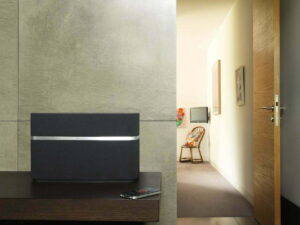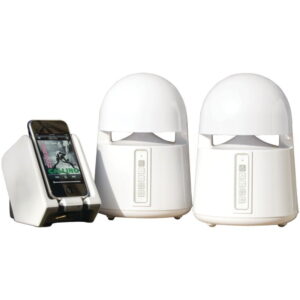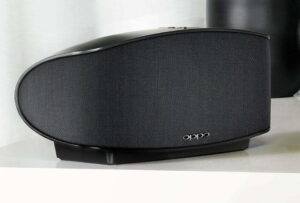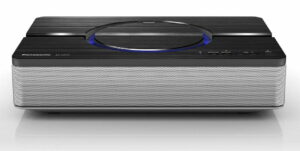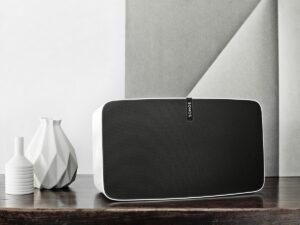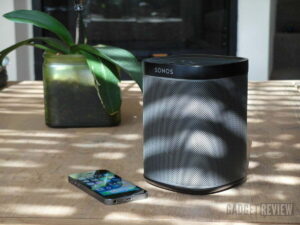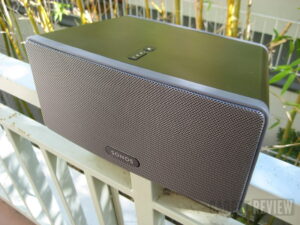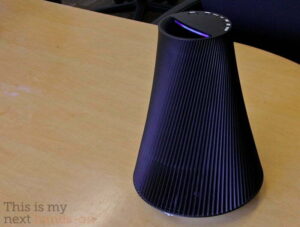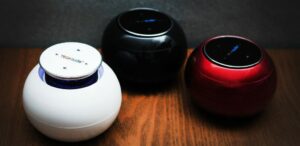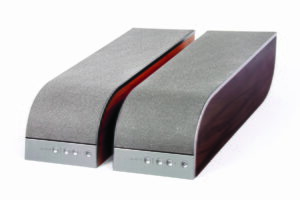To make a wireless speaker, a decision has to be made beforehand on how it will connect to the audio source. Once this is done, all of the rest of the technology, from cabinet size to speaker size to ergonomics, comes into play. But sometimes what’s lost in this process is a drive to get good sound — Hi-Fi quality sound — from the speaker. Korus’ V600 Wireless Speaker System doesn’t stint on that one bit, even though they don’t follow the usual convention for making a wireless speaker work. If you want something more conventional, the Amazon Echo (2nd Generation) – Best Wireless Smart Speaker may be for you. That said, there are a lot of reasons why this speaker may be considered among the highly-rated Bluetooth speakers.
The V600 doesn’t have Bluetooth, nor does it use one’s home network to wirelessly stream audio from a computer/mobile device. Instead, the SKAA proprietary wireless system is used. This means that the V600 can be used anywhere, since the transmission is contained between the dongle attached to the computer/mobile device and the built-in receiving of the speaker. It also removes much of the interference “hash” found when using the more conventional audio streaming means, thus allowing for a higher quality of audio to be played.
Because of the proprietary wireless system, a transmitter (dongle)must be connected to the audio source. Included are three of these, the USB one working with PCs as well as Mac computers, but the 30 pin and Lightning connector dongles are designed for use with Apple mobile devices only (i.e., iPhones and iPads). There’s no complex setup — just plug it in and use it, although there is a free app that can control the volume of however many speakers you have (providing Master as well as individual volume controls and letting you name each speaker). This app has to be active if using the 30-pin dock. Meanwhile, you’ve powered up the V600 by plugging it in and turning it on — a series of small buttons at the top providing such control, along with that for volume and muting and searching for the audio source (with accompanying LED lights). When switching to another dongle, pressing the Connect button will be necessary, otherwise, the V600 will seek out and connect every time on its own (and very quickly too).
Of course, the speaker has to have an internal audio system capable of providing this higher quality. Good thing the V600’s speaker-set, consisting of two 3.5” mid-bass drivers in their own sealed enclosures, a 5.25 woofer dead center, and two front-firing 1” dome tweeters, also includes two 0.75 side-firing tweeters and a “LiveStage” acoustic signature designed to space out the sound field (i.e., widen its apparent stereo effect for a more enveloping perception). Check out our Libratone lt 400 NA 11001 Loop Wireless Portable Speaker review and our Libratone Zipp review for speakers with great sound quality, too.
Alternatively, if you need quality sound for your TV, you’ll want to check out our Samsung HW Q70R review.
The V600 is pretty heavy, although not so much so that it can’t be considered “portable” and moved around, since there’s an integrated handle. Some of that weight comes from the speakers and the internal tech, including the 100-watt amp — but a bit has to be delegated to the fact that its battery power comes from 6 “D” cells that go into a bottom compartment. Yep, no rechargeable battery here. The only disadvantage comes from having to have a spare set of “D” cells for when the battery power starts to die down (these guys are heavy, by the way). While I couldn’t verify the batteries lasting up to 90 hours as noted, I do have to say that the batteries didn’t fail for the 15+ hours I used them. If you want a portable Bluetooth speaker then you read through the JBL Charge Bluetooth Speaker review, Tunebug Shake portable speaker review, and the JBL Jr. Pop speaker review.
How you position the V600 affects the bass primarily — the manual suggests close proximity to a wall to use it as a sounding board, and I found this to make sense. With the V600 on a kitchen table, it’s back less than a foot from a wall, I began by playing some Canned Heat that featured a lot of fuzzy, wah-wah guitar action. I liked what I heard, even with the volume kept well below the halfway mark. I then moved on to vocals — alternating between high-resolution tracks of Lou Reed and Eminem to see whether the vocals would stay crisp and clear amidst what I would have to call almost unreal strong bass (with the volume now turned up 3/4ths). I had no trouble understanding the lyrics, which stayed in the foreground as they should. Even Bob Dylan’s raspy voice from his early albums came through without any difficulty or audio “mush” blurring it.
I was given a V400 so I could try out the multi-room, or in this case, multi-area feature that lets you broadcast from one audio device to multiple speakers simultaneously. I saw this as a good chance for trying the V600 outside, so I placed it in a patio area, with the V400 at the other end where there was a power outlet (no battery option). By itself, the quality of the sound from the V400 was good — but being outside heavily diffused its ability to deliver bass. Not so with the V600 which showed that size does matter. Turned up all the way, the V600 delivered a loud broadcast that got the attention of neighbors whose balconies overlooked the patio big time. The lesson learned is that the V600 can handle wide-open spaces and still deliver wide-open sound and plenty of loud. You got a tailgate party working inside or hunkering down around the grill outside, either way, you’re getting plenty of loud and clear audio. And since it’s confined to whoever is using the dongle, you can be selective as to who gets to stream their playlist (those using the 30 pin dongle have the App store open automatically to download the app).
As to the wireless effect, I had no problem streaming audio to both speakers at the same time, even though I was easily 50” feet away. Granted this was mostly empty space, but I ducked behind a nearby wall and the music continued unaffected. Other wireless systems can’t do this kind of auto-synchronization (Bluetooth speakers are a single speaker/single area solutions only).
Bottom line: The Korus V600 Wireless Speaker System does the two things a wireless speaker should do but often doesn’t: provide a reliable connection for streaming audio (be that for music, gaming, or video) between the source and the speaker, and broadcast the audio from that speaker with high-fidelity and high volume. A retail of $449.00 for a wireless speaker might seem high, but as the saying goes, you get what you pay for. And in this case, the V600 just doesn’t make our list as one of the best wireless speakers we’ve tested. Sonos’ Play:5 2015 on the other hand…
Related Articles:
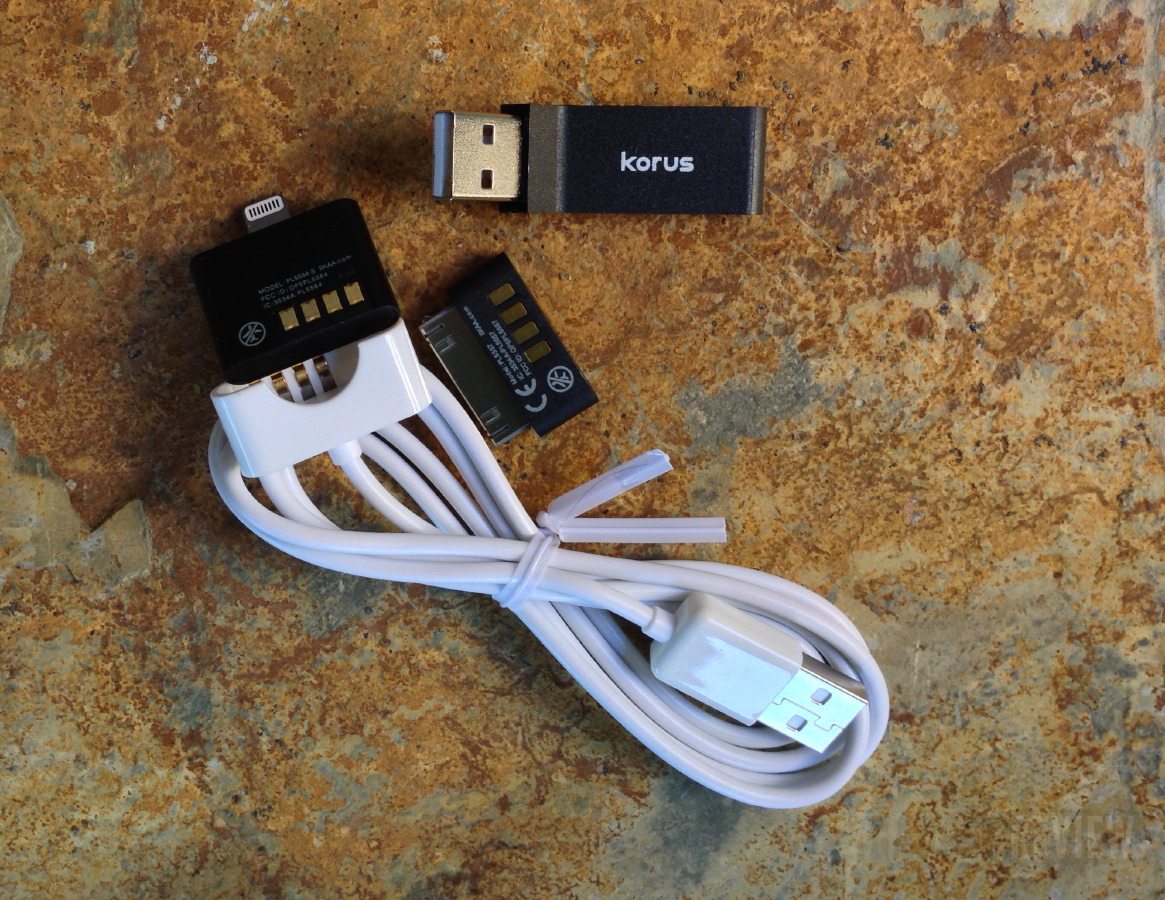
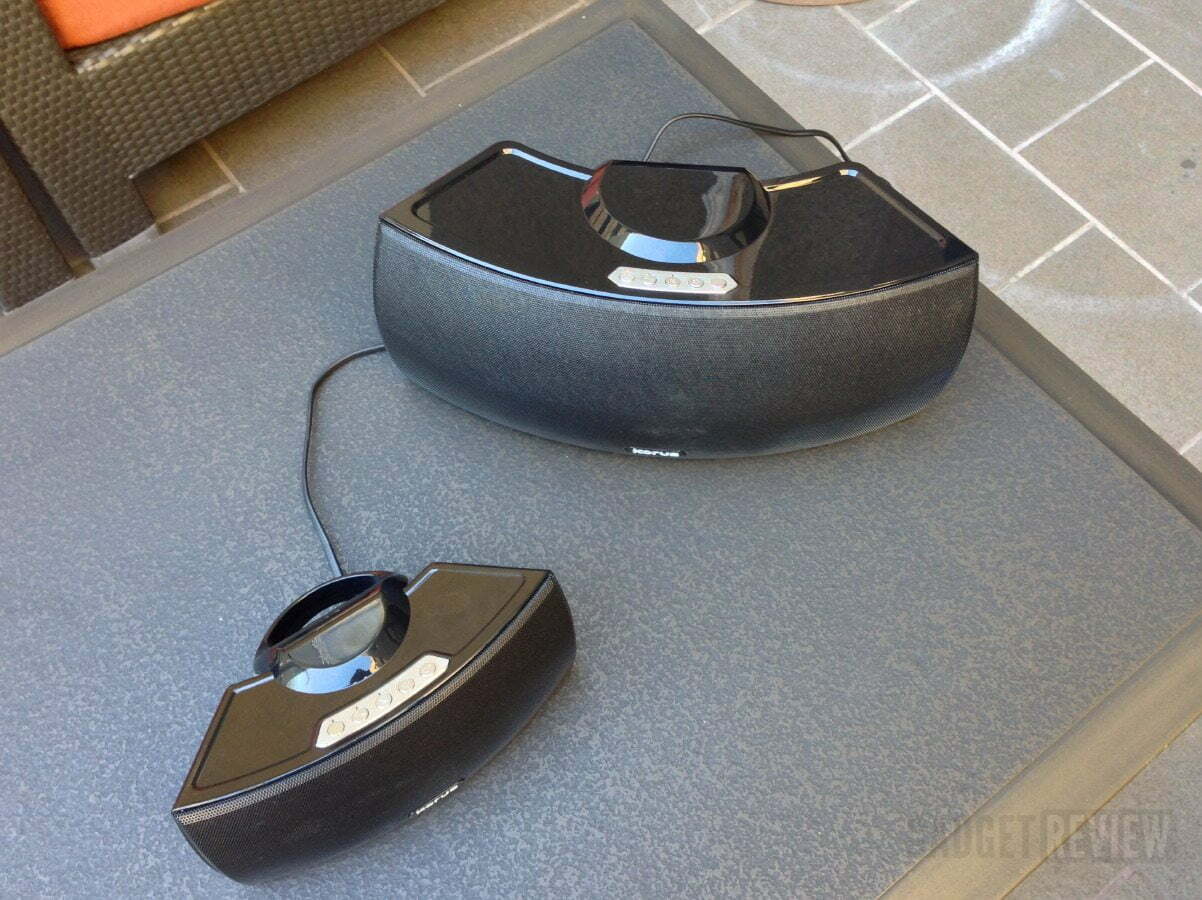
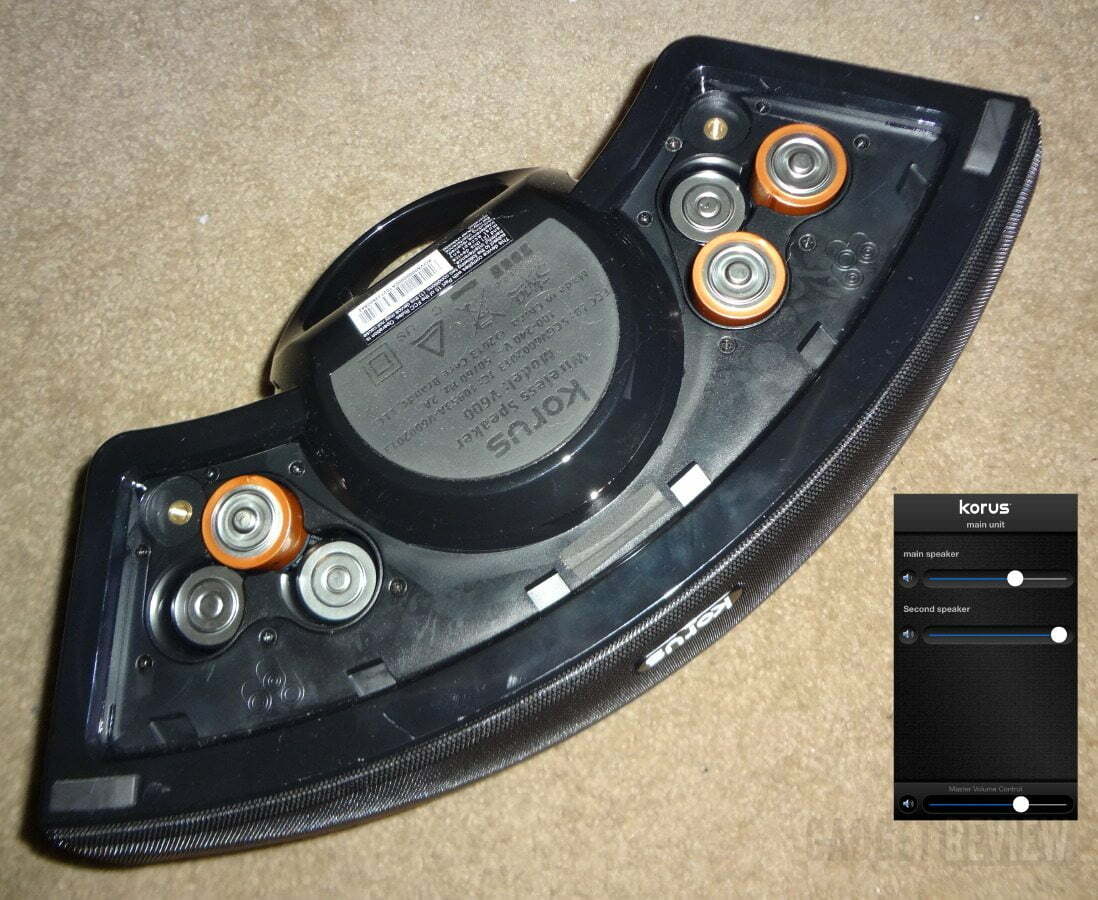
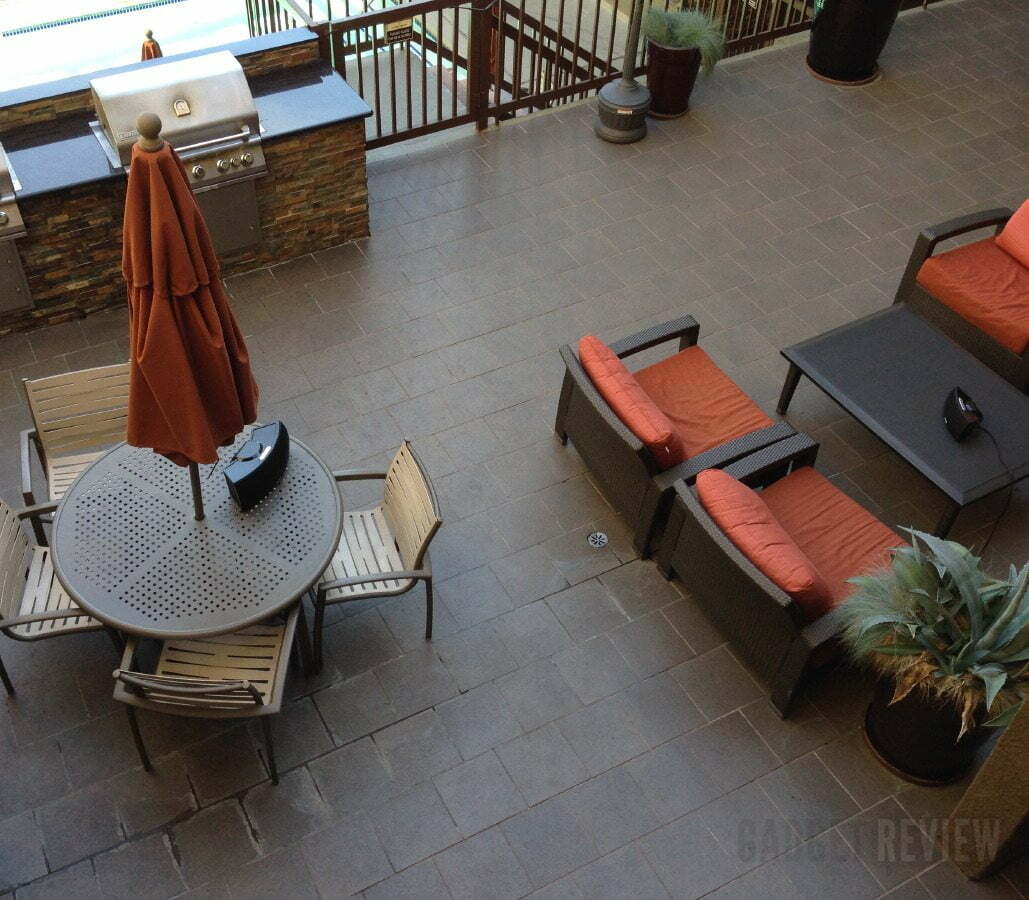
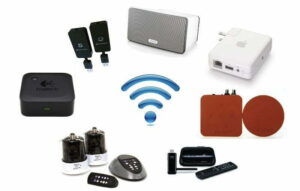
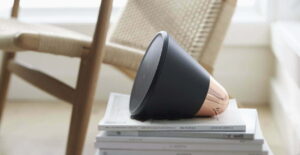
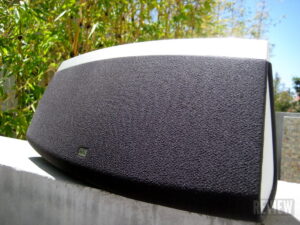

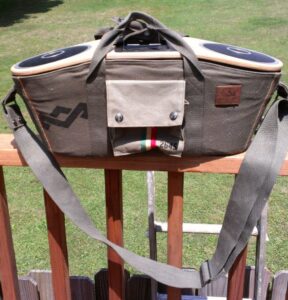
![Best Wireless Speakers in [year] 6 The top wireless speakers - not Bluetooth.|A top wireless speaker from sonos](https://www.gadgetreview.dev/wp-content/uploads/best-wireless-speaker-300x169.jpg)
